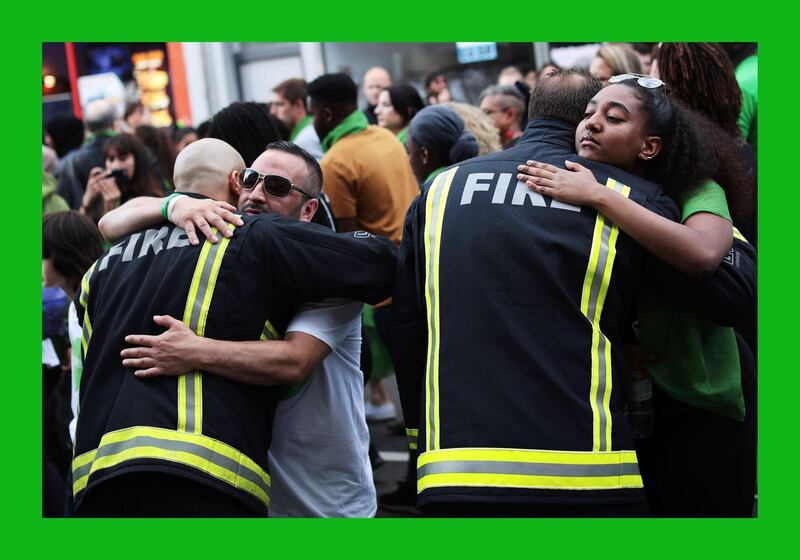A week of memorials to the 72 people who died in the Grenfell Tower fire came to a close with an extraordinary ‘silent march’ through the streets of west London on Thursday night.
An estimated 5,000 people, more than twice the expected number, turned up to honour the dead and survivors on the first anniversary of the disaster.
Throughout the day there had been a string of events across the North Kensington area where the tower stands.
A 24-hour vigil at one of the churches in the shadow of the building on Wednesday night launched a set of events to mark the tragedy. Services were held at mosques and by other faith and community groups, including tree planting and poetry readings.
Nationally, a 72-second silence was held, which was observed in Parliament, by the England football squad in Russia, and by the royal family. On a visit to Liverpool with Meghan, the Duchess of Sussex, the Queen wore a green outfit – that being the colour which has become associated with the campaign to honour and remember the victims of Grenfell.
As the time neared for the march to start from the ‘Wall of Truth’ mural underneath the Westway overpass, a couple of hundred metres from the tower, thousands of people gathered, most either wearing green sashes or otherwise wearing the colour: headscarves, Irish and Australian football shirts, Sikh turbans.
As the march set off, an impeccably observed silence took hold: despite the presence of such a large crowd, the only sound that could often be heard was the clicking of the shutters of photographers. Distant car alarms would occasionally go off, but would be rapidly quieted by their owners, aware of the solemnity of the occasion.
The marches have taken place on the 14th of every month since the fire, but the turnout on Thursday was the largest by far – the march took an hour to pass a single point as it turned off Ladbroke Grove, the main road which runs through the culturally and socially mixed neighbourhood.
One of the most poignant moments came as the procession passed an honour guard of fire fighters, who had been the frontline emergency service attempting to save the residents of the tower. Marchers shook their hands and hugged the men and women of the London Fire Brigade, who themselves found it difficult to contain their emotions.
Although there were politicians on the march – the opposition Labour leader Jeremy Corbyn and a group of national lawmakers attended, as did his party colleague Sadiq Khan, the Muslim mayor of London – the day belonged to the public, be they from the area or across the country. Placards and signs showed that people had come from as far afield as Scotland and Ireland.
As the sun set, the march petered out with the crowds peacefully dispersing. An Iftar took place in a local park which was almost overwhelmed by the numbers who wished to join the breaking of the fast with local Muslims. The healing process for the survivors and families will take many more years, but as the first anniversary passed, the community showed its strength and resilience.






